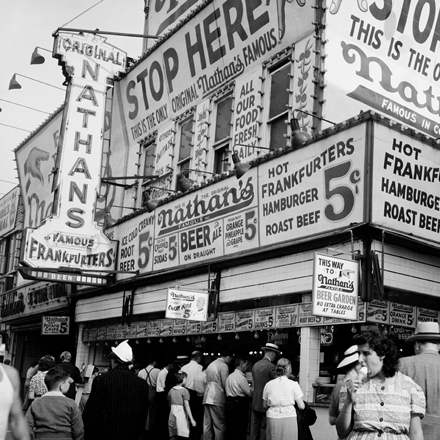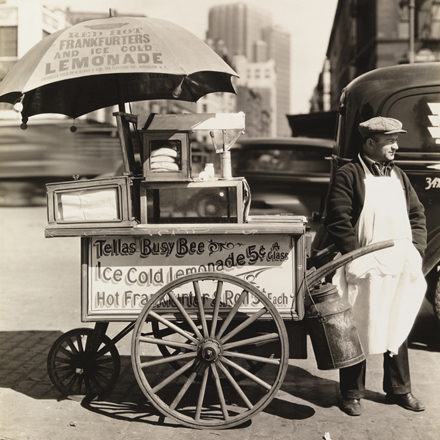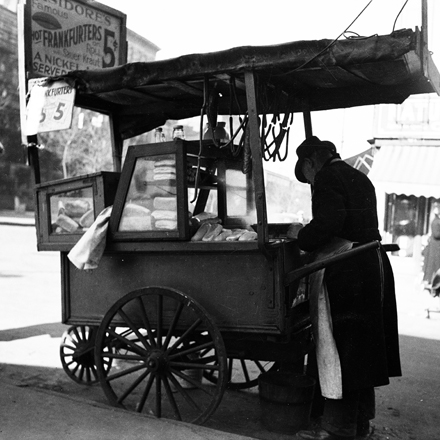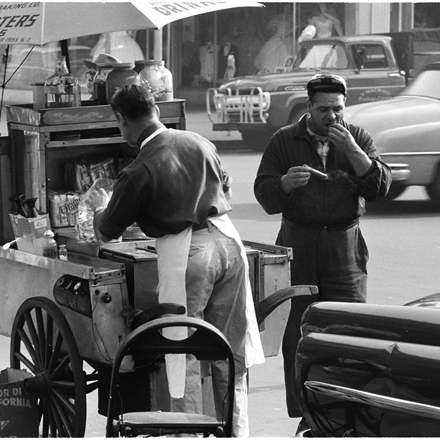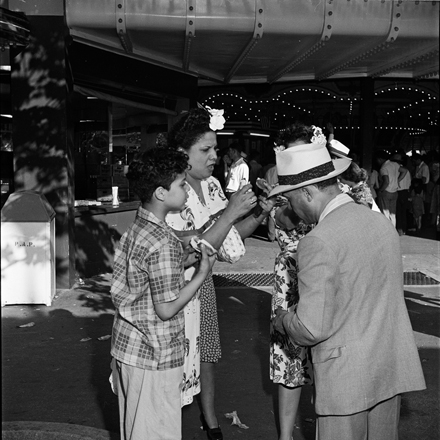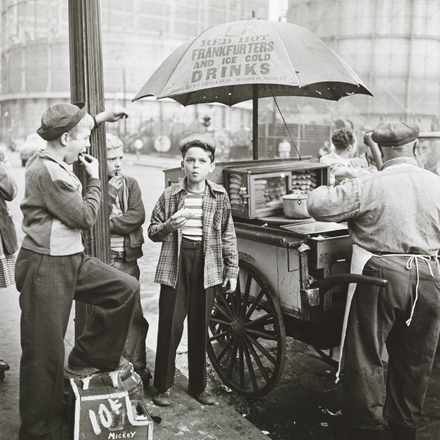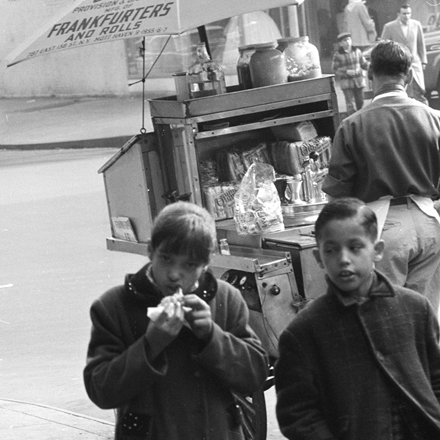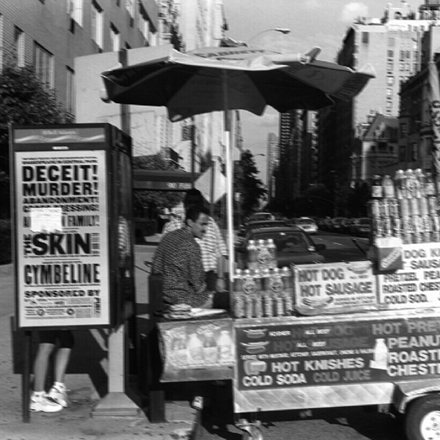he origin of the hot dog has long been contested and has even been a source of tension in American history. In 1913, for example, Mayor Reginald S. Bennett called an emergency meeting of his cabinet when he learned two men were selling hot dogs in Asbury Park, New Jersey. That day, the council banned the sale of frankfurters on Sundays, citing that such commerce “would not add to the dignity of the beach.”
Hot dogs drew even further scrutiny in 1922 when detectives arrested two men in Atlantic City for secretly peddling drugs by inserting small packages of narcotics inside the slit of hot dog buns. Indeed, despite hot dogs’ popularity, newspaper articles of the early 1900s cast a negative image of the classic American finger food. Likewise, Upton Sinclair’s 1906 novel The Jungle, which described unsanitary sausage making practices in a Chicago meat packing house, also influenced the public’s perception. Nevertheless, the millions of hot dogs bought in the United States every year testifies to the food’s popularity beginning in late nineteenth century America.
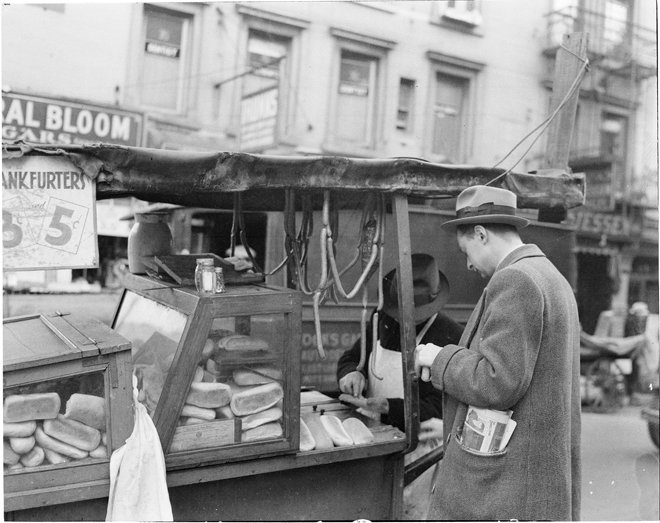 Andrew Herman, Federal Art Project (n.d.). Frankfurters, ca. 1935. Museum of the City of New York. 43.131.7.18
Andrew Herman, Federal Art Project (n.d.). Frankfurters, ca. 1935. Museum of the City of New York. 43.131.7.18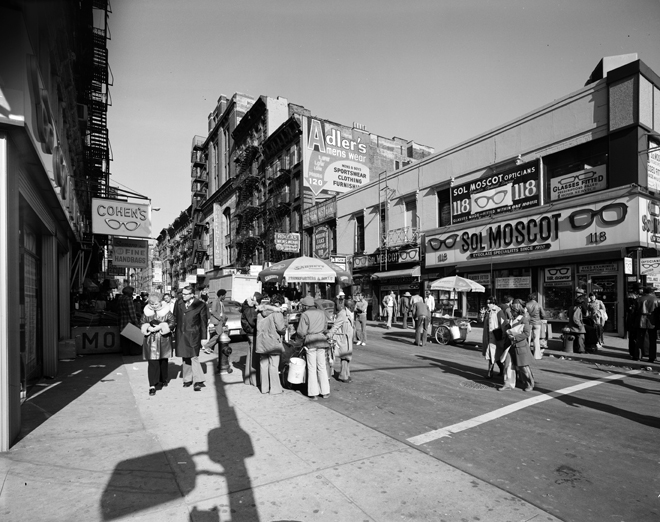 Edmund V. Gillon (1929-2008). [Looking north on Orchard Street from Delancey Street], ca. 1977. Museum of the City of New York. 2013.3.2.627
Edmund V. Gillon (1929-2008). [Looking north on Orchard Street from Delancey Street], ca. 1977. Museum of the City of New York. 2013.3.2.627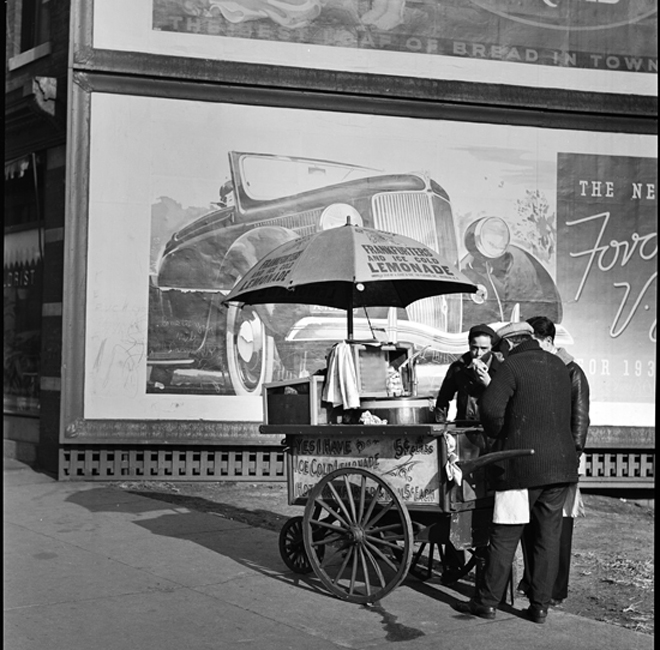 Wurt Bros. (1894–1979). [Hot dog stand], ca. 1939. Museum of the City of New York. X2010.7.1.17105
Wurt Bros. (1894–1979). [Hot dog stand], ca. 1939. Museum of the City of New York. X2010.7.1.17105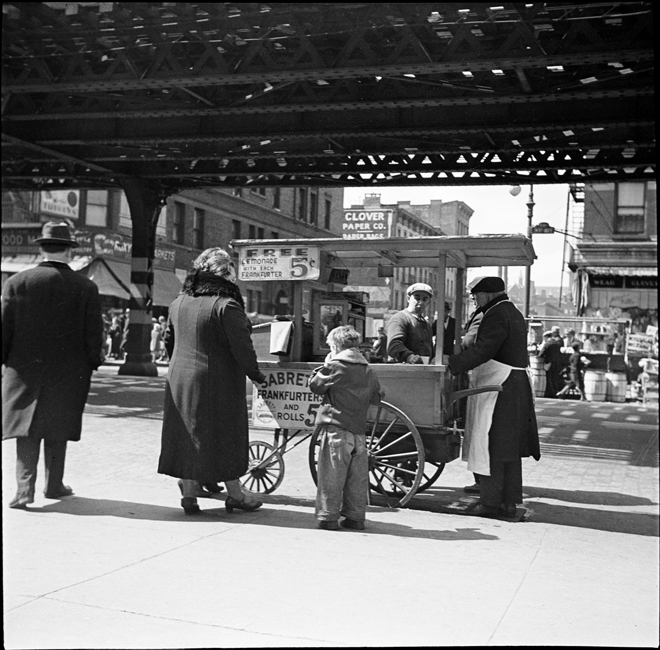 George Herlick, Federal Art Project (n.d.). Sabrette Frankfurters and Rolls, 1937. Museum of the City of New York. 2003.25.76
George Herlick, Federal Art Project (n.d.). Sabrette Frankfurters and Rolls, 1937. Museum of the City of New York. 2003.25.76